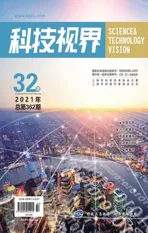Review of The Handbook of Bilingualism and Multilingualism
2015-11-07单菲菲
单菲菲
(凯里学院外国语学院,贵州 凯里 556011)
This new handbook,by adding ‘Multilingualism’to the title of the first edition[2],reflects the dramatic developments of the bi- or multilingualism research.Thus,to cover the expansive research scope,the authors use the term plurilingualism to refer to both bilingualism and multilingualism at the outset.The book consists of 36 chapters with newly added five chapters (i.e.Chapters 7,17,22,26,and 27),representing less studied areas and vital trends on multilingualism.Furthermore,a couple of chapters(i.e.Chapters 2,4,5,6,10,12,16,20,21,24,33,35,and 36)are updated and revised to expound broader approaches and content.Thus,this volume is not the replacement of the first edition but should properly be considered as companion.
The book is divided into four parts,each part consisting of an overall introduction and several chapters providing detailed topics of one area of plurilingualism by various top scholars in their fields.It brings the reader up-to-date comprehensive discussion and a plethora of approaches of plurilingualsim from multi disciplines,methodologies and angles,which presents the hot and new inquiry has developed into a mature and separate field.
Part I ‘Overview and Foundations’ provides a general introduction of some main conceptual and methodological issues in plurilingualism,on the basis of which the following parts will give detailed and specialized discussion.Key concepts,issues and approaches of the study of plurilingualism are introduced,with the emphasis given to societal pluriligualism and the psycholinguistic,linguistic,and sociolinguistic approaches.Part I provides a general orientation of the field,which is a complement of that in the first edition.
Part II‘Neurological and Psychological Aspects of Bilingualism and Multilingualism’focuses on the plurilingual individual elaborated by five chapters.The first section examines the neurological traits of plurilingualism by the study of plurilingual aphasia.The second section includes four chapters concerning bi- or multilingual acquisition,including bilingual child’s language development and cognition,especially executive function skills in young bilinguals,and some theoretical,methodological,and applied issues.Two new chapters deal with current models of third language acquisition with the new emerging exploring of generative morpho-syntax and heritage language-one complex instance of bilingualism,which are welcome and excellent addition because of their new approaches and angles.
The third section discusses interaction of different language systems in language knowledge,comprehension and production,e.g.codeswitching and code-mixing.Most studies shows that the bilinguals’two languages extremely influence each other and the integration of different sub-fields and research methodologies are main trends of language contact studies.
Section 4 presents models of bilingual memory that address the question of bilingual language organization and production and describes how bilinguals use language to express their emotions and code past experiences,based on the language-specific expression and cultural implications,to seek psychotherapy and treatment related to bilingual mental health.
The final section reviews code-switching and code-mixing with regard to grammatical structure and sentence production,sign-language and spoken language,and social and psychological factors.
The two sections of Part III deal with plurilingualism in society.The first section deal with issues of language contact in multilingual speech communities,such as diglossia,public policy,language maintenance and shift imperialism and endangerment.The last chapter,a new addition,identifies the issues of the new,rarely-explored ‘multilingual society’ -multilingual families.Although admitting the advantages of multilingual family,she points out the stress of it,and then provides some strategies.
Another section moves on the effects of plurilingualism on the media,education,literacy,and the law.A chapter, ‘Bilingual Education’,which replaces the original chapter whose focus is on bilingual education for majority-language students,provides an overview of bilingual education research and various bilingual models mainly in the United States.In addition,two new chapters present more fascinating current work on the widespread impact of plurilingualism.Chapter 26 examines the interaction of different writing systems and how this influences the meta-linguistic and cognitive changes of bilingual,resulting in the differences from monolingual.Chapter 27 deals with the impact of multilingualism on legal issues and addresses the important role of the study of multilingualism in forensic linguistic research.
The last part, ‘Global Perspectives and Challenges:Case Studies’,concludes this comprehensive edition by presenting the prevalent state of plurilingualism over the world.Each chapter examines the multilingual issues discussed in more general terms in the previous chapters in one area of the world.But there are a few changes in some titles with some new focus in this edition.For example,Chapter 33 Multilingualism in Greater China and the Chinese replaces the original chapter‘Bilingualism in East Asia’ by the same authors with the focus shifting from the broad East Asia to the relatively narrow China and Chinese diaspora,which shows the Chinese language with the largest speakers and its interaction with the other languages in the world are increasingly important resources of plurlingualism and attract great attention of the world.
In conclusion,The Handbook of Bilingualism and Multilingualsim is an excellent volume as a general introduction to the field of bilingualism and multilingualism research and can be served as a guide book for graduate students and researchers who engage in language contact.This new Handbook,by adding the research trends of rapid development of bi/multilingualism over the world,offers a plenty of new information and perspectives.And two versions of handbooks are the most comprehensive volumes and can be served as encyclopedia of the multilingualism research.
[1]Tej K.Bhatia,and William C.Ritchie(eds.).2012.The Handbook of Bilingualism and Multilingualism,second edition (Blackwell Handbooks in Linguistics)[Z].Chichester,U.K.:Wiley-Blackwell Publishers.
[2]Tej K.Bhatia,and William C.Ritchie.2004,2006.The Handbook of Bilingualism[M].Chichester,U.K.:Wiley-Blackwell Publishers.
